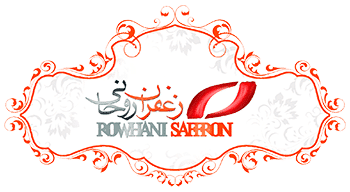79% of Iranian saffron production is related to Khorasan Razavi
According to the General Department of Public Relations of Khorasan Razavi Governorate, Ali Rasoulian stated today: Saffron creates an average of 210 working days per hectare of employment, which means that each hectare has about one permanent job.
He continued: in the Sixth Development Plan, the yield of saffron is expected to increase to 6-7 kg per hectare and its production is 450 tons per year.
Head of Economic Affairs and Investment, Deputy of Economic Affairs Coordination and Resource Development of Khorasan Razavi Governorate stated: This province has the first rank in the country with 121 units with a license for processing, processing and packaging of saffron with a nominal capacity of 400 tons.
Rasoulian said: the number of saffron packaging exploitation licenses in the province is 114 items with a capacity of 235 tons per year and Mashhad with 34 units, Gonabad with 15 units, Kashmar with 11 units and Torbat Heydariyeh with 10 units are cities that They have the greatest capacity in this regard.
He pointed out: in 2016, from the credits of the National Development Fund and the optimization system, the amount of 18 thousand 700 million Rials was paid to 9 production units in the form of working capital and also in 1396, from the credits of the National Development Fund, the amount of 29 thousand million Rials They have been introduced who are in the process of reviewing and concluding a contract with the bank.
Head of Economic Affairs and Investment, Deputy of Economic Affairs Coordination and Resource Development of Khorasan Razavi Governorate stated: In 2016, according to the customs statistics of the Islamic Republic of Iran, about 203 tons of saffron worth $ 286 million were exported.
Rasoulian stated: Cases such as the approval of the Iranian saffron organizing program (comprehensive plan) in the Cabinet, the purposeful development of saffron cultivation in order to balance supply and demand, prevent the smuggling of saffron onions to other countries and planning and coordination in attracting Facilities to support the inventors and manufacturers of mechanized saffron devices are among the government’s support measures in this area.
He added: Proposing a credit line for the national saffron program in line with the policies of the resistance economy, launching a saffron exchange to develop saffron transactions and preparing a HACCP system for saffron production from production to processing with the cooperation of the Ministry of Health and Medical Education and the National Committee The development of HACCP is one of the other measures and programs carried out for saffron.
Head of Economic Affairs and Investment, Deputy of Economic Affairs Coordination and Resource Development of Khorasan Razavi Governorate continued: Issues such as registering the national brand of Iranian saffron, construction of modern saffron processing units and production of various products, construction of saffron onion sorting units Renovation and reconstruction of existing units, construction of saffron flower and onion terminal, enforcement of domestic saffron standards, establishment of a fund to support the development of the national agricultural sector – saffron, approval of the saffron onion standard by the Seed Registration and Certification Institute, creation of new export markets for saffron, Genetic registration of Iranian saffron, construction of saffron onion production units in susceptible areas based on the approved standard and identification and consolidation of saffron production organizations can be named as the plans ahead for saffron.
Rasoulian stated: Issues such as the traditional method of cultivation and low production efficiency, lack of working capital of processing and packaging units, bulk exports, lack of strong and major organizations in the production sector, insufficient research and development (RAD) related to Production and application of saffron in the pharmaceutical industry Dyeing of cosmetics industry and the lack of research on food and pharmaceutical formulations and insufficient market studies and export of saffron and traditional export of saffron to several countries (UAE, Spain, Saudi Arabia, etc.) are among the existing challenges. It is about saffron.
He stated: Currently, 5 saffron support shopping centers in 5 cities have been activated by the Rural Cooperative Union of the province, which are managed under the supervision of the saffron purchase coordination committee in the Khorasan Razavi Agricultural Jihad Organization.







Get Social